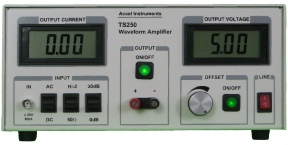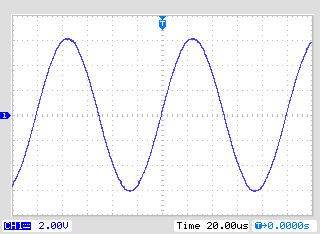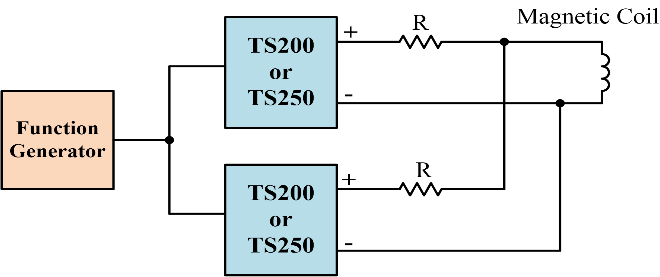











Instruments For Testing Your Innovations



AC Magnetic Field
AC magnetic field is generated when an alternating current is passing through a coil. The AC current is a time-
An AC current driver such as the TS200 and the TS250 can output many amperes of current through an AC magnetic coil to produce the electromagnetic field. The TS20/TS250 can drive coils such an AC Helmholtz coil pair directly. This called the direct-
Figure 1. The TS250 driver amplifies current and drives a magnetic coil to produce AC magnetic field.
AC Magnetic Field Generation Diagram

Table 1. AC Magnetic Field Driver Selection Guide
Model |
Voltage Range |
Peak Reactive Current (Note 1) |
Peak Resistive Current (Note 2) |
|
TS250- |
- |
0 – 5.0A |
0 – 6.0A |
|
TS250- |
- |
0 – 3.1A |
0 – 4.4A |
|
TS250- |
- |
0 – 2.1A |
0 – 3.0A |
|
TS250- |
- |
0 – 1.7A |
0 – 2.5A |
The TS200 and the TS250 are high-
Low Frequency Electromagnetic Field
Equation-
AC electromagnet (magnetic coil) impedance is given in Equation-
AC Electromagnet Current and Impedance
Z=R + jωL
Equation-


Equation-
At low frequency the magnetic coil impedance (Equation-
High Frequency Magnetic Field
At high frequency on the other hand, the AC electromagnetic coil impedance is increased proportional to the frequency, ω. The magnetic coil impedance is often very large. Generally, the reactance dominates the overall impedance. For example, an 1mH high-
Selecting an Alternating Magnetic Field Generator
Alternating Magnetic Field Driver Waveform Examples
Figure 2. TS250-

Note 1. Magnetic coil is inductive which means its power is reactive. The TS250 output current is reduced for reactive power.
Note 2. Maximum resistive current is obtained at max voltage minus 1.0V. For example 9.0V for the TS250-

Figure 4. Connect two TS250 in parallel to increase the output current by 2x.
High-Current Amplifier Impedance Matching
Magnetic coils are highly inductive. Their impedance is reactive which means the real part of the impedance is nearly zero (very low resistance) as discussed in Equation-
Parallel AC Drivers For Higher Current
The TS250-
Understand Reactive vs. Real Power
A simple method to increase an electromagnetic driver output current (and stronger AC magnetic field) is to make the coil more resistive. To do that just add a resistor in series with the coil as shown in Figure 3. Use a resistor with resistance between 0.5Z to Z, where Z is equal to the high-
Resistive Impedance Matching

Figure 3. Impedance matching will increase the AC electromagnetic field driver output current.


Equation-

Equation-

Strong Magnetic Field Using a New Resonant
Series Resonant for High-



Quick Links

Related Technical Information

